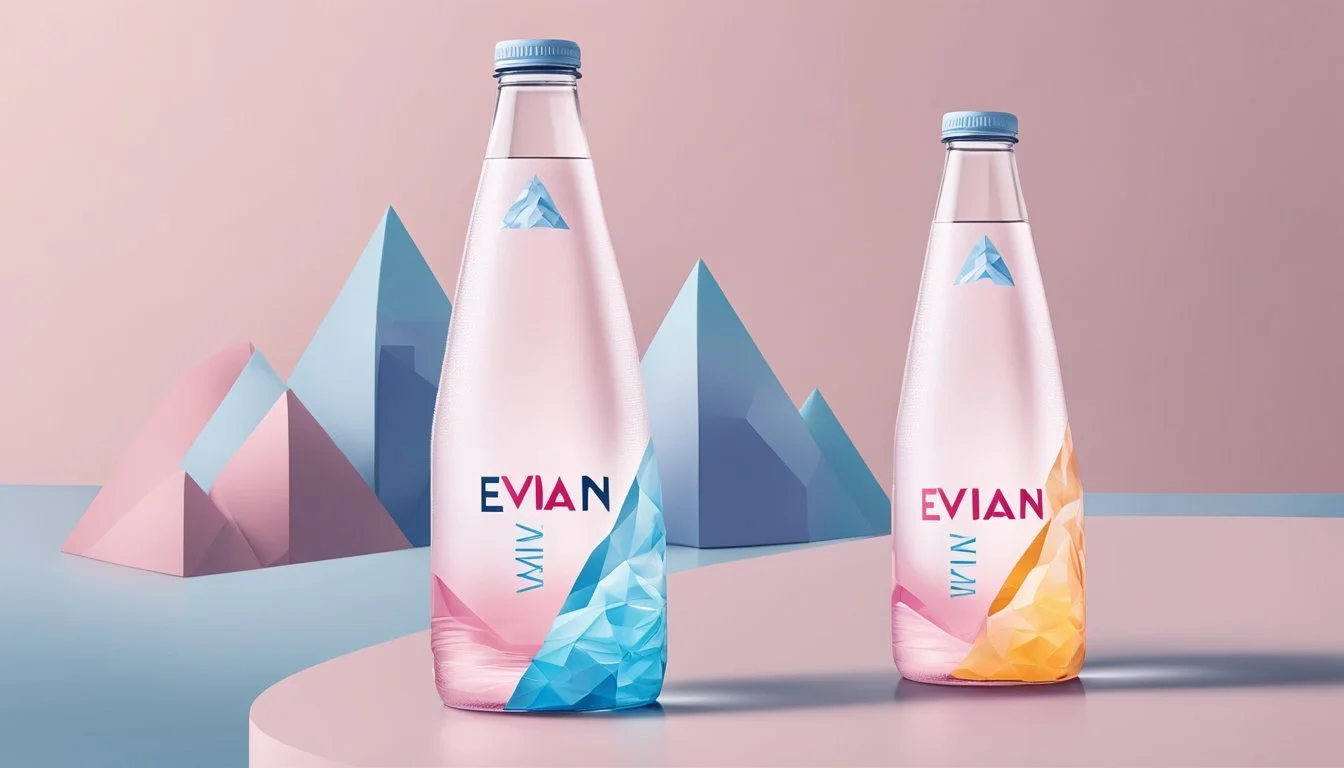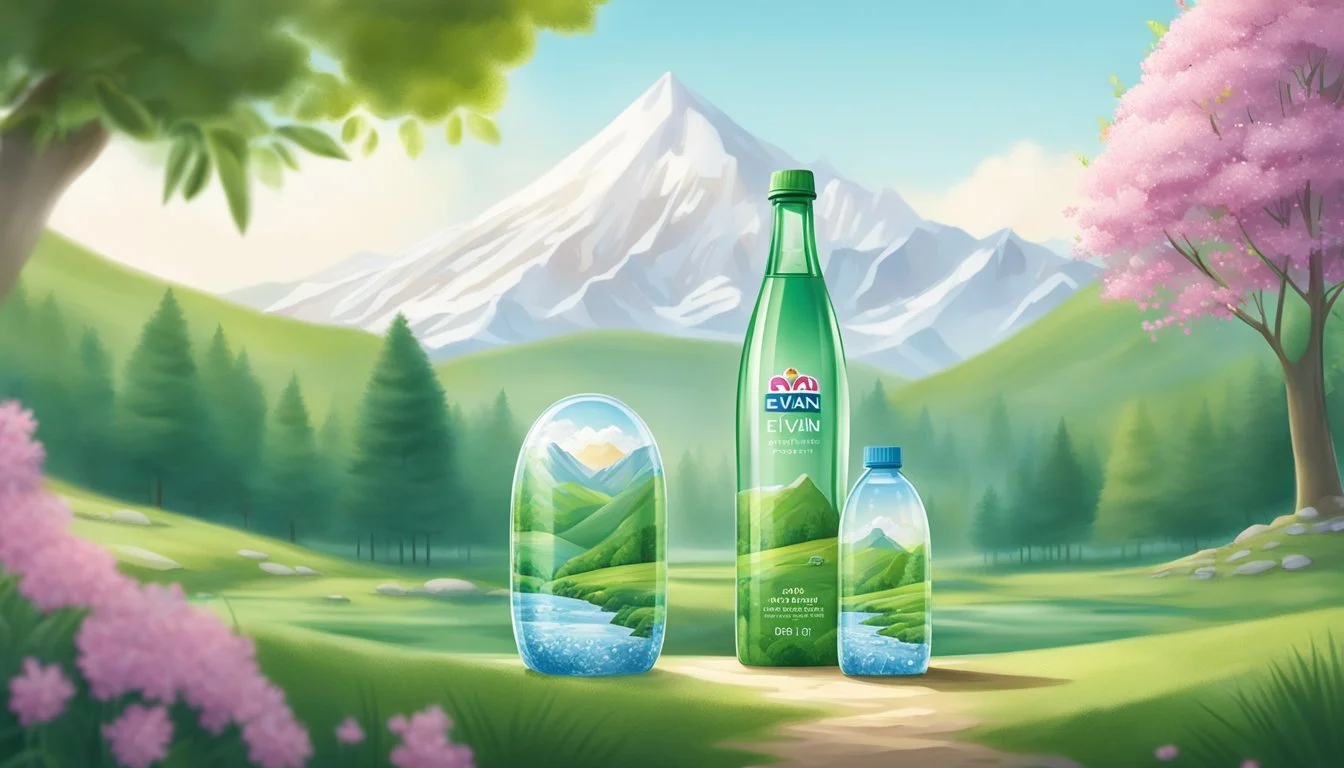Evian vs. Penta
In the world of premium bottled water, discerning consumers often find themselves choosing between Evian and Penta. Both brands are recognized for their distinct qualities, making them stand out in an oversaturated market. Evian, sourced from the French Alps, is celebrated for its mineral content and taste, which is attributed to the natural filtration process through glacial sands. It boasts a balanced mineral composition, including elements like potassium and magnesium, which are thought to contribute to the overall flavor profile and potential health benefits.
Penta, on the other hand, prides itself on ultra-purity. Employing a patented 13-step purification process, Penta water claims to remove more impurities than standard filtration methods. This process not only purifies the water but also strips it of dissolved solids, which some argue might affect the taste. Penta's purity is its unique selling point, appealing to those who prioritize the absence of contaminants over natural mineral content.
Each brand caters to different customer preferences, and choosing which bottled water is 'better' generally comes down to individual priorities. Whether one values the natural minerals and taste that come with Evian's glacial heritage or the extreme purity provided by Penta's advanced technology is a personal choice. Both waters have their merits, but the preference between Evian's naturally occurring minerals and Penta's commitment to purity is subjective and remains a topic of discussion for consumers and connoisseurs alike.
Understanding Bottled Water
In the realm of bottled water, consumers encounter a variety of types, each with distinct sources and potential health implications. This section will clarify these attributes to guide informed choices.
Types of Bottled Water
Spring Water refers to water that flows naturally to the earth's surface from an underground aquifer. Meanwhile, Purified Water undergoes processes like reverse osmosis or distillation to remove impurities. Notably, Alkaline Water is ionized to increase its pH level, which advocates assert can neutralize body acidity. However, opinions vary on the claimed health benefits of alkaline waters.
Comparing Water Sources
The source of bottled water often influences its mineral content and taste. Natural Spring Water typically retains minerals like calcium, magnesium, and potassium, originating from its subterranean journey. Conversely, purified bottled water, which may originate from tap water, is stripped of these minerals during the purification process but may have electrolytes added back for improved taste and hydration benefits.
Health Considerations
The health impact of bottled water hinges on factors such as mineral content and the presence of contaminants. While purified water offers the safety of removed impurities, spring water provides natural electrolytes essential for hydration. It is crucial to note that the U.S. Food and Drug Administration regulates bottled water, mandating rigorous testing to ensure it meets strict safety standards before reaching consumers.
Examining Brands
When comparing bottled water brands, the focus often lands on their source and purity, as well as their standing within the market landscape. This section assesses Evian and Penta, considering these aspects to understand what sets each brand apart.
Evian's Unique Source
Evian water originates from the precipitation on the French Alps and embarks on a 15-year filtration journey through glacial sands, which naturally endows it with a unique mineral composition. Primary minerals include potassium and magnesium, instrumental in giving Evian its renowned taste and positioning it as a premium bottled water choice.
Penta's Purification Process
Unlike Evian, Penta water undergoes a rigorous 13-step purification process that includes ultraviolet light, filtration, and reverse osmosis. This elaborate method not only removes impurities but also strips the water of all dissolved solids, promoting Penta's commitment to delivering one of the purest forms of bottled water available in the market.
Market Standing of Competitors
In the bottled water market, brands fiercely compete to establish their dominance and appeal. Here's a brief overview:
Nestlé's Pure Life and Aquafina, by PepsiCo, are known for affordability but generally offer a more basic water quality.
Coca-Cola's Dasani and Smartwater provide enhanced water options but face scrutiny over sustainability.
Fiji Water touts its tropical source, while Voss Water is recognized for its stylish packaging and artesian source from Norway.
Essentia Water stands out with its high pH level, claiming to offer better hydration.
Suffice to say, Evian and Penta, despite different methods, have each carved a niche for themselves, with the former enjoying widespread international recognition for its natural source and the latter priding itself on its state-of-the-art purification process.
Taste and Purity
When comparing Evian and Penta bottled water, one must consider the specific taste profile and the measures taken to ensure purity. These factors significantly influence consumer choice and perception of quality.
Taste Profile Analysis
Evian's water is sourced from the French Alps and is often recognized by its smooth taste with a hint of mineral content. This natural spring water is filtered through glacial rock, which imbues it with its characteristic flavor profile.
Penta, on the other hand, undergoes an intensive purification process that includes 13 steps and the addition of oxygen. This results in an ultra-purified taste that is distinct from Evian, free from any pronounced mineral taste.
Purity Standards and Safety
Evian:
Contaminants: Minimal presence due to natural filtration through glacial sands.
Standards: Meets strict regulations set by both local and international health authorities, such as the EPA.
Heavy Metals: Rare due to the protected source and the geology of the alps.
Chlorine: Not present; water is chlorine-free.
Penta:
Contaminants: Claims to remove more contaminants than required by government standards.
Standards: Purity is ensured by surpassing EPA regulations for water safety.
Heavy Metals: Asserts near total elimination through their high-intensity purification process.
Chlorine: Completely absent, following multiple stages of filtering.
Environmental and Ethical Considerations
When considering the environmental and ethical aspects of bottled water brands, factors such as sustainability initiatives and recycling practices are crucial. These components play a significant role in determining the ecological footprint and ethical standing of a brand like Evian or Penta.
Sustainability Initiatives
Evian has taken several steps to reduce its environmental impact. It set a goal to become carbon neutral by 2020 and implement circular solutions for its plastic usage. To achieve this, Evian has started using 100% recycled plastic (rPET) in their bottles, an initiative that aligns with a circular economy model where materials are repurposed to minimize waste.
Penta does not publicly detail extensive sustainability initiatives similarly to Evian. However, it emphasizes the use of renewable energy in its purification process and claims to maintain high efficiency in its operations. Without comprehensive public data, the extent of Penta’s sustainability practices is less transparent.
Plastic Use and Recycling
The usage of plastic water bottles raises concerns about landfill contribution, resource depletion, and environmental degradation. Both Evian and Penta products contribute to the consumption of plastic, albeit with different approaches to the issue.
Evian promotes its bottles made from rPET, encouraging recycling to prevent the bottles from ending up in landfills. This is crucial given the long decomposition period of plastic and the growing environmental concern over plastic pollution.
Penta, while not as vocal about the use of recycled plastic in its bottles, might leverage the health-centric market by focusing on the purity and quality of the water. Yet, the absence of information on their use of rPET or recycling initiatives could be a point of concern for environmentally conscious consumers.
The issue of plastic bottles also ties into broader environmental concerns such as carbon emissions from manufacturing processes and the impact on ecosystems like those in Colorado, which experience drought and resource scarcity. The production of plastic, largely from fossil fuels like gas and materials like sand, carries a heavy carbon footprint. Companies that minimize their use of virgin plastic help reduce reliance on these gas-intensive processes.
Both Evian and Penta have a responsibility to address these issues to prevent contributing to environmental degradation. While Evian has made strides in their commitment to recycling and using recycled materials, the level at which Penta engages in similar practices remains undetailed.
Consumer Preferences
When selecting bottled water, consumers typically weigh the perceived health benefits and cost against the convenience of obtaining the product. Here is a closer look at how Evian and Penta stand in terms of health benefits and their accessibility to the general consumer.
Perceived Health Benefits
Evian is often associated with high-quality water, sourced from the French Alps, which naturally contains a balance of electrolytes and minerals. Its taste is frequently described as refreshing and it's marketed as beneficial for hydration. Penta, on the other hand, undergoes a patented 13-step purification process that is designed to remove impurities, which some consumers believe delivers superior purity and contributes to one of the best-tasting bottled waters available.
Price and Availability
Brand Price Range Availability Evian Mid to high Widely available in both stores and online retailers Penta Higher-end Available, but less commonly found than Evian
Evian offers a broad range of package sizes, from single-serve bottles to large multi-packs, making it easily accessible and often competitively priced, though still considered a premium product. Penta, while priced at the higher end of the scale, is not as widely distributed as Evian. Its availability can be more limited, often leading water drinkers to specialty grocery stores or online platforms to purchase it.
The Future of Bottled Water
The bottled water industry is poised for transformation, with technological advancements and changing consumer preferences shaping its evolution.
Innovations in Bottling
Technological innovation is at the forefront of bottled water's future, as companies strive for sustainability and efficiency. Biodegradable bottles are the industry's response to environmental concerns, with research focussing on materials like PLA (polylactic acid) derived from renewable resources. Additionally, companies are exploring advanced filtration and purification technologies to further improve water quality without relying heavily on natural sources.
Filtration Innovations:
Reverse Osmosis enhancements
UV and ozone purification methods
Bottle Materials:
Development in plant-based plastics
Adoption of recycled PET (rPET)
Emerging Trends in Consumer Choices
Consumer choices are shifting towards products that offer health benefits and transparent sourcing. There is an upward trend in consumption of alkaline water with perceived health advantages. Moreover, consumers increasingly demand to know the origin and processing details of the water they drink.
Health-oriented trends:
Alkaline
Electrolyte-enhanced
Transparency demands:
Source labeling
Processing information




